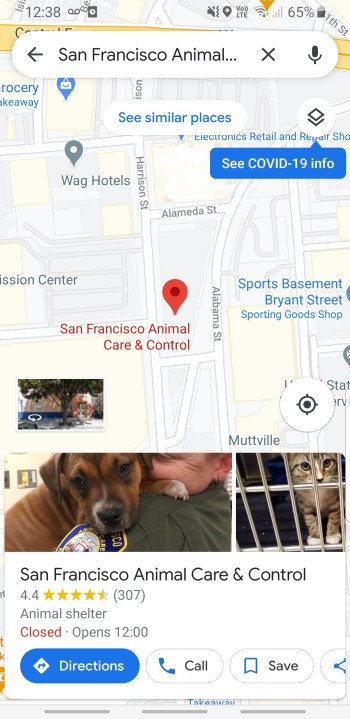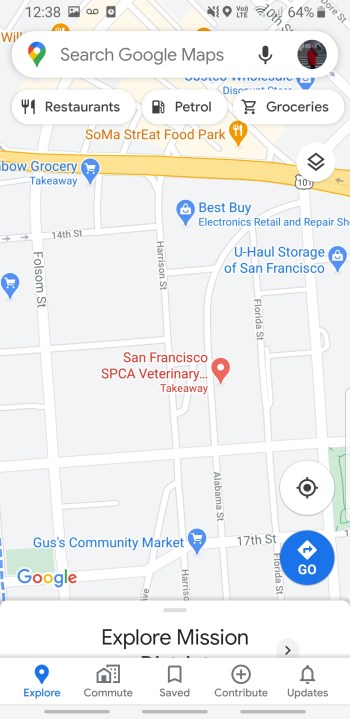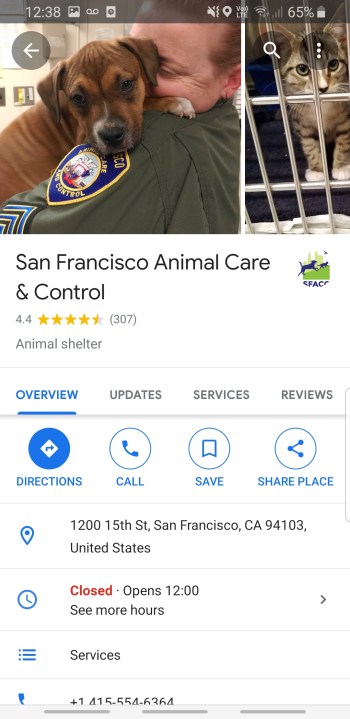Pins are a convenient Google Maps feature that allows you to save a location. You can drop a pin to save an address or mark a location if it doesn’t have an address or if the address is incorrect. Your pins will help you navigate to these locations again, and you can also share them with your friends to indicate a meetup location.
Google Maps has this efficient and quick method known as dropping the pin that you’ll find useful. Here, we’ll show you how to employ this method on either your mobile device or computer.
Dropping pins in Google Maps on mobile
The most recent version of Google Maps has made it much easier to drop a pin from the search box — in fact, it drops a pin automatically, whether you want it or not. It assumes if you are seeking a particular address, you want a pin dropped there. So when you use the search box to find an address, count on a pin being deposited there automatically. You still have to tap and hold if you are using the map interface instead of the search box to find a location.
Step 1: Open the Google Maps app on your iPhone or Android phone.
Step 2: Search for an address using the search bar at the top of the screen or scroll around the map until you find the location where you want to drop a pin.
Step 3: Press and hold the screen to drop a pin. A light touch is all that’s needed.
Step 4: Tap the pin to get directions to that location and share or save them.
Step 5: To remove a pin, just pinch out, and a box at the top reading Dropped Pin or the Specific Location appears with an X on the right side. Tapping that X removes the pin.
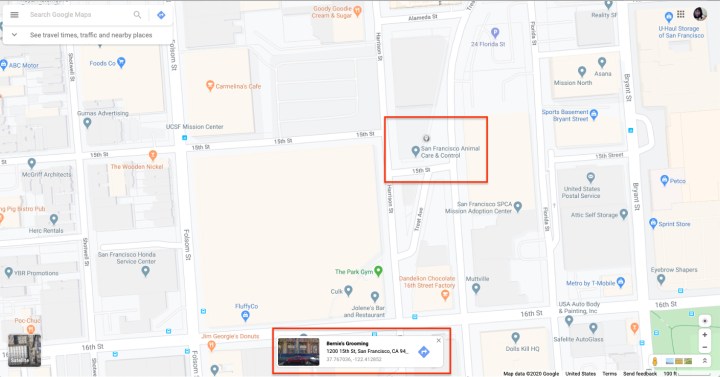
Dropping pins in Google Maps on computer
Step 1: Navigate to the Google Maps website.
Step 2: Search for an address using the search bar on the upper left side of the screen or scroll around the map until you find the location where you want to drop a pin. The search bar automatically drops a pin at the place you searched. You don’t have to do anything else.
Step 3: Left click the spot you want to drop the pin. You may have to zoom in or click slightly to either side of the location you want to drop a pin if there is already a marker there. A small gray pin will appear, as well as an info box at the bottom right of the screen.
Step 4: You can press the navigation icon in the info box to get directions to the dropped pin or click anywhere else in the box to bring up more information about the location you’ve selected.
Step 5: From the additional information screen, you can click Save to save the pin to Your Favorites, Want to Go, Starred Places, or a New List. You can view saved pins under Your Places in the main menu.
Dropping multiple pins by creating a map on desktop
If you want to see each of your various pins simultaneously, you can save each in the Your Places file. However, be aware that you cannot see all of your pins on one single map, as Google Maps only lets you see one pinned location per map. If you need to publish all your pins on one map, you’ll have to develop your own map.
Creating a map of your own allows you to see the various pins in a simplified way while also showing you how they are related geographically. This is especially helpful when you want to measure the distance and relationship between each of your favorite pinned places. We’ve outlined some simple steps below to teach you how to create your own Google Map.
Step 1: Navigate to the Google Maps website.
Step 2: We want to mention that you don’t have to be signed in to your Google account to leave individual pins. However, you need to be logged in if you want to save the pins. You also must sign in to your profile when you want to create a Google map.
Step 3: Tap the menu icon at the top left side of your screen.
Step 4: After this, click Your Places, then Map, and lastly Create Map.
A new window will appear, which will show you your newly personalized Google map.

Step 5: Click Untitled Map to give your map a proper name and type in a brief description if you want. Don’t leave without clicking Save when you’re finished.
Step 6: You can record a precise location by tapping on the marker icon (this is located right beneath the search bar). You can tap a particular area to add a marker for this specific location, or you can easily use the search bar and type in your place of choice to find it.
Step 7: Click on the Add Directions icon in the icon bar beneath your first destination’s description. You may see it pop up at the top of the screen next to the first marker. Once you complete this step, you will notice an A field and a B field in the bottom left of the page. From here, you can quickly conduct a location search and use the side menu to keep adding additional destinations. You’ll see that your map will automatically link to the locations.
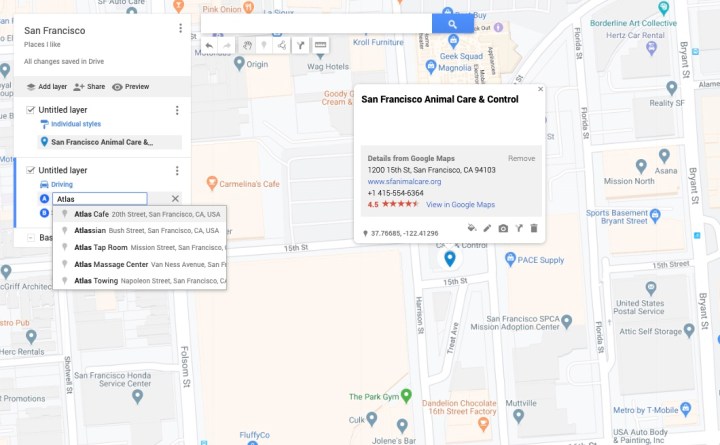
Step 8: If you’re a person who only plans to use this map for personal purposes, the last step was your final step. There’s no need to do anything else. On the other hand, if you want to share your map with another person, you’ll need to click on the icon in the top left corner. After doing this, you’ll be able to see a preview of your map before you share it.
Editors' Recommendations
- The best tablets in 2024: top 11 tablets you can buy now
- A new Google Pixel Tablet is coming, but it’s not what you think
- The most common Google Pixel 8 problems and how to fix them
- The 6 best tablets for kids in 2024
- The 6 biggest announcements we expect from Google I/O 2024

